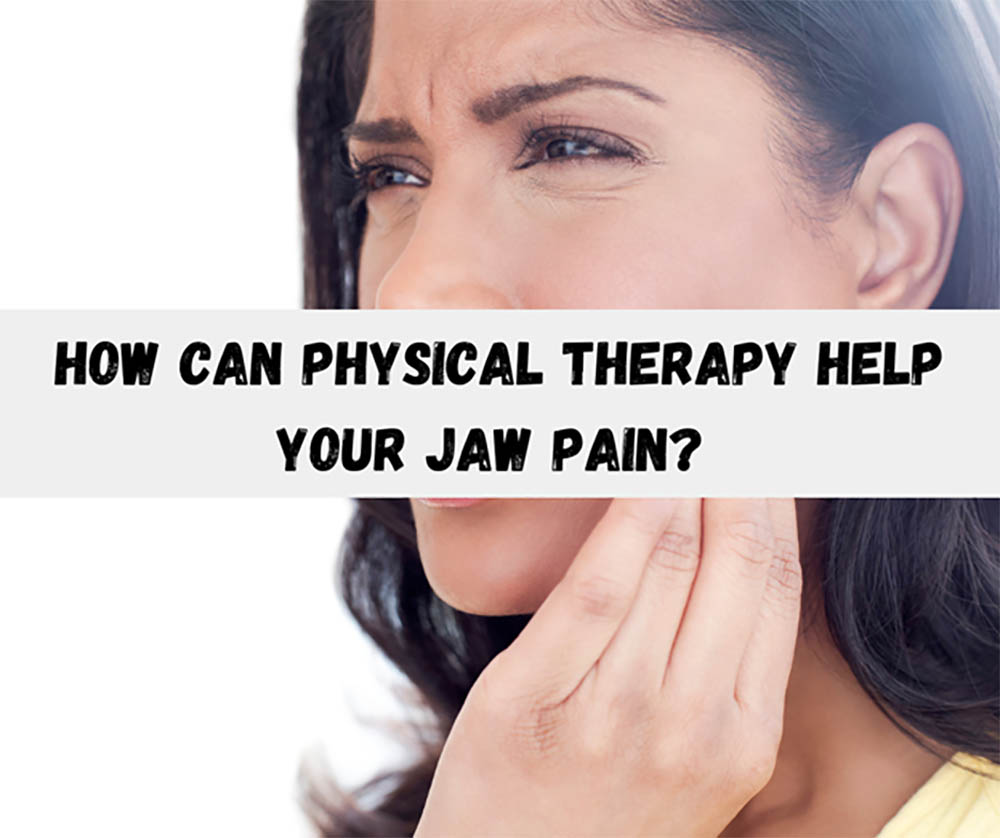
Do you suffer from pain on one or both sides of your jaw? Temporomandibular Joint Disorder (TMD, previously referred to as TMJ) is very common, and more than 10 million people in the United States suffer from this condition. Did you know physical therapy for TMD/TMJ offers a treatment?
What Is TMD?
The temporomandibular joint is a hinge that connects your jaw to the temporal bones of your skull, which are in front of each ear. This joint moves your jaw up and down and side to side. Problems with your jaw and the muscles in your face that control it are known as temporomandibular joint disorders (TMD). TMD is a condition that can cause significant difficulty using your jaw, marked by pain that limits your ability to open and close your mouth comfortably. This can occur due to the prolonged opening of the mouth, which you may experience during dental procedures or from other jaw injuries. More ambiguous causes, such as arthritis or autoimmune diseases, can also be at fault. Treatment of these conditions can involve TMJ mobilization and soft tissue to the jaw muscles to release tension in the joint.
Symptoms of TMD
The muscles of your face may feel like they are in spasm, you can experience clicking, catching, and popping sounds in your jaw and difficulty opening your mouth to eat or talk. These symptoms may also lead to jaw pain/fatigue, neck pain, headache, and locking jaw, making you unable to open or close your mouth.
Physical Therapy for TMD/TMJ and Treatment Options
Relieving TMD symptoms is fortunately possible, and there are several ways a certified TMJ physical therapist will approach treatment for TMDs’ to help ease jaw discomfort and pain. So, what can you expect, and how can a physical therapist specializing in this condition help if you have TMD?
- Manual Therapy and joint mobilization treatments to help improve movement and relieve pain in tissues and joints.
- Education: a PT will teach you better posture, positioning, ergonomics, and sleeping positions that will improve the resting position of your jaw, head, neck, and shoulders.
- TMD Soft Tissue Mobilization: Treatment reduces pain, stiffness, and muscle tension, resulting in improved movement by utilizing mobilizations to the jaw to help improve joint mobility. Mobilizations can restore normal joint motion and may help relocate a displaced articular disc in the jaw joint.
- Massage: The use of various massage techniques to directly treat jaw pain. Massage aims to relax muscles and improve circulation, allowing a normal motion to occur in the temporomandibular joint.
- Trigger point dry needling for the management of neuromusculoskeletal pain.
- Exercises for the jaw: The goal of exercise for TMD is to restore normal, pain-free jaw motion.
What Are the Causes of TMD?
There are many causes of TMD. These may include:
- Impact to the head and or neck like whiplash
- Displacement of the articular disc in the joint
- Muscle spasms around the joint
- Arthritis in the joint
- Sitting or standing with a forward head and rounded shoulder posture
- Stress can cause tightened facial and jaw muscles
- Grinding or clenching of the teeth
The joint can cause pain and joint movement dysfunction whenever it is over-stressed. Stress may lead to inflammation of the joint or of the muscles and ligaments surrounding the temporomandibular joint.
What Happens During a PT Evaluation
The first visit with a PT for TMD will be an initial evaluation. The PT will take time to discuss your condition, asking questions about how your jaw pain started and what activities improve your symptoms. Eating habits and other activities that may irritate your jaw will be discussed. Your PT will also ask about previous treatments you may have had for your TMD pain. In addition, several tests may be performed during the PT evaluation to get a baseline measurement.
The components of a PT evaluation may include:
- Measurements of neck and jaw range of motion
- Assessment of the structures around the jaw
- Listening to joint noises, clicks, or pops
- The measure of the strength of the jaw and postural muscles
- Assessment of posture
Once your evaluation is complete, your physical therapist will discuss the findings with you, make a plan of care and work with you to develop goals for your individual course of therapy.
What to Avoid
If you have TMD, there are certain things you should avoid as part of your treatment program.
- Using your teeth as tools
- Nervous chewing
- Eating hard, chewy, or crunchy foods
- Poor posture
- Sleeping on your stomach
- Teeth grinding
- Stress
Timeline for Healing
TMD can get better after one treatment, but you can expect a full recovery from TMD pain within eight to twelve weeks. Working with your PT and performing regular exercises can help in your recovery. However, most patients will significantly improve their symptoms with appropriate physical therapy.
How Can Physical Therapy for TMD/TMJ Help?
If you have pain in your jaw, you may have TMD. Physical therapy for TMD/TMJ can be a helpful modality of care. A certified TMD physical therapist can help determine the cause of your pain and can improve the way your jaw moves.
A physical therapist uses non-invasive treatments to decrease your pain and help restore the natural movement of your jaw.
Our physical therapist Dr. Shay Nash is uniquely trained in TMD evaluations and treatment, for a TMD assessment, please schedule an appointment with her. In addition, a personalized care plan can be developed for you with various treatment options. Physical therapy treatment effectively relieves and manages TMD, even when the symptoms are long-standing and severe.

